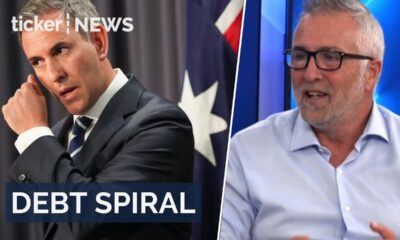Money
Alibaba sexual harassment investigation: ‘no evidence to prove rape’

Money
Stocks rally ahead of Thanksgiving as markets log four days of gains
Markets gain momentum ahead of Thanksgiving, with the Dow up 388 points and Oracle rising 4% amid investor optimism.
Money
Dow surges 500 points amid rate cut optimism
Dow jumps 569 points on fresh hopes for December rate cut and AI market optimism
Money
Gold prices surge as Central Banks buy big, but risks grow ahead
Gold prices surge as central banks increase demand; risks include a stronger dollar and rising interest rates.
-



 News3 days ago
News3 days agoWarner rejects Paramount’s hostile takeover bid
-



 Shows3 days ago
Shows3 days agoJames Bozinovski: Reshaping retail with innovative strategies
-



 News5 days ago
News5 days agoAI surges in 2025: Key insights
-



 News4 days ago
News4 days agoSupreme Court upholds TikTok ban: Free speech at risk?
-



 News1 day ago
News1 day agoAI stocks surge amid market shifts and spending warnings
-



 News5 days ago
News5 days agoRBA outlook and Australian equities in 2026: Commodities, rate cuts, and top sectors
-



 Ticker Views3 days ago
Ticker Views3 days agoAustralia is reeling from the worst terrorist attack on home soil. Could it have been prevented?
-



 News4 days ago
News4 days agoAlbanese rejects super tax push amid political tensions








